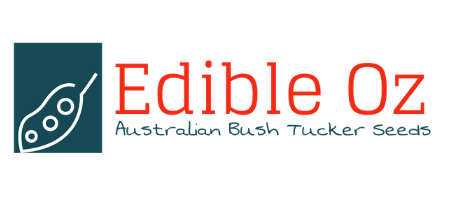
Mulga Wattle - Acacia aneura (Kurku) seeds
Regular price
$3.95
Sale
or make 4 interest-free payments of
$0.98 fortnightly with
 More info
More info
Acacia aneura - Mulga (True Mulga)
A versatile and resilient native tree offering bush food, practical uses, and ecological benefits.
Quick Facts
- Height: Grows up to 15 meters as an evergreen shrub or small tree, depending on water availability.
- Flowers: Profuse rod-shaped yellow flowers; blooming occurs after summer or winter rains.
- Soil: Thrives in medium to light, well-drained soils, and tolerates lime.
- Position: Prefers full sun but can grow in part-sun.
- Climate: Highly drought-resistant and frost-tolerant, making it ideal for arid regions.
Why Grow Acacia aneura?
Mulga is an iconic Australian tree, perfect for dry landscapes and bush food gardens. Its adaptability to harsh conditions, nitrogen-fixing properties, and wide range of uses—from edible seeds to durable wood—make it a valuable and multifunctional plant for gardeners and land restorers alike.
Bush Food Note
Mulga provides a rich array of edible products:
-
Seeds:
- Cooked, dried, and ground into flour for seed cakes.
- Roasted and mixed with water to make a high-protein, high-fat paste.
- Gum: A pale, edible gum exudes from the branches and is considered a delicacy.
-
Mulga Apple:
- Edible gall, marble-shaped, produced by wasps on the branches.
- The white grub inside the gall is a sweet treat.
-
Red Mulga Lerp:
- Sweet honeydew produced by small insects on branches.
- Sucked directly off the branch or soaked in water for a sweet drink.
Other Uses
- Woodcraft: Durable wood used for digging sticks, boomerangs, containers, and other tools.
- Ash: Burnt twigs create ash that can be mixed with Native Tobacco for chewing.
- Mats: Leaves provide a natural mat for placing food.
- Honey Ant Habitat: Mulga trees support honey ant nests.
- Mistletoe Host: The tree hosts mistletoe, another bush food plant.
How to Grow
-
Sowing Instructions:
- Scarify seeds and soak them in warm water overnight to aid germination.
- Sow in well-draining soil and cover lightly.
-
Position:
- Choose a sunny or partially shaded location.
- Ideal for arid or semi-arid climates.
-
Care Tips:
- Water regularly during establishment; drought-tolerant once mature.
- Mulch around the base to retain soil moisture and suppress weeds.
- Minimal pruning is required; shape as needed to control size.
Uses in Your Garden
- Bush Food Garden: Produces nutritious seeds, edible gum, and sweet honeydew.
- Land Restoration: Nitrogen-fixing roots improve soil quality in poor soils.
- Erosion Control: Stabilises sandy soils in arid regions.
- Wildlife Habitat: Supports honey ants and mistletoe, enhancing biodiversity.
- Ornamental Value: Profuse yellow flowers and light shade add beauty to landscapes.
Germination Tips
- Timeframe: Germination typically occurs within 2–4 weeks.
- Pre-Treatment: Scarify seeds and soak overnight to improve success rates.
- Moisture: Keep soil consistently moist during germination.
- Light: Ensure seeds receive ample sunlight for optimal growth.
Order Now
Add the beauty, functionality, and resilience of Acacia aneura to your garden or restoration project. With its edible seeds, durable wood, and ecological benefits, Mulga is an iconic Australian tree that offers something for everyone.
Order your Mulga seeds today and grow a piece of Australia’s arid heritage!
